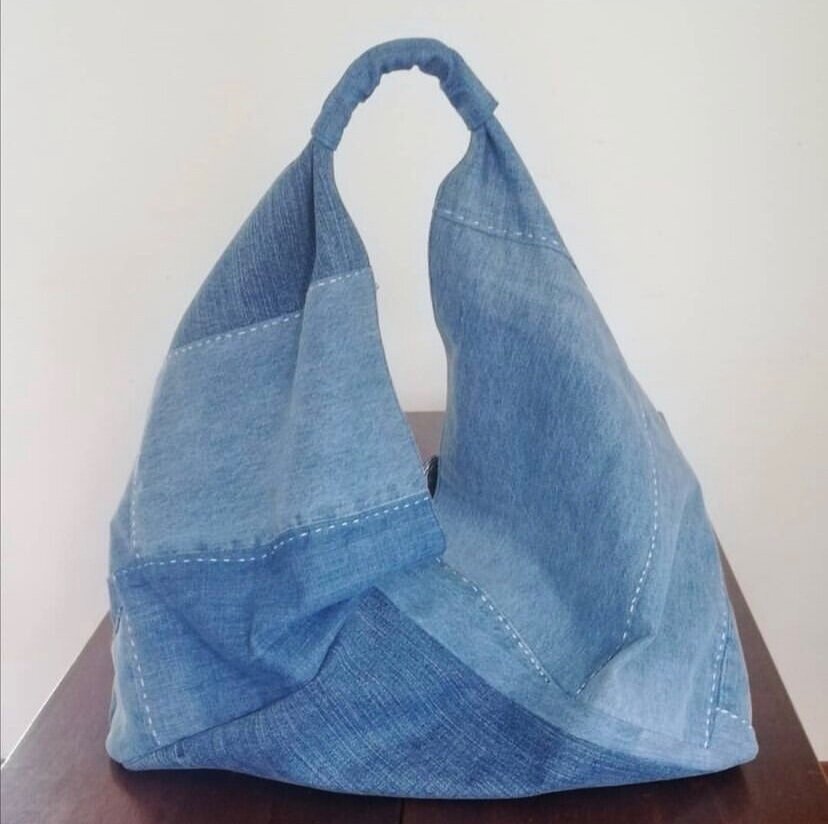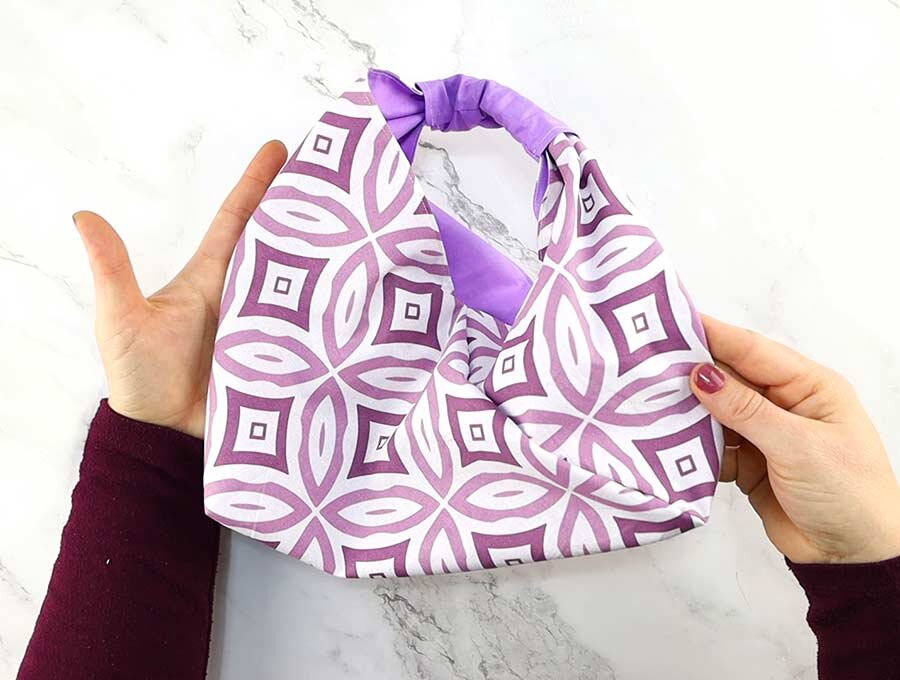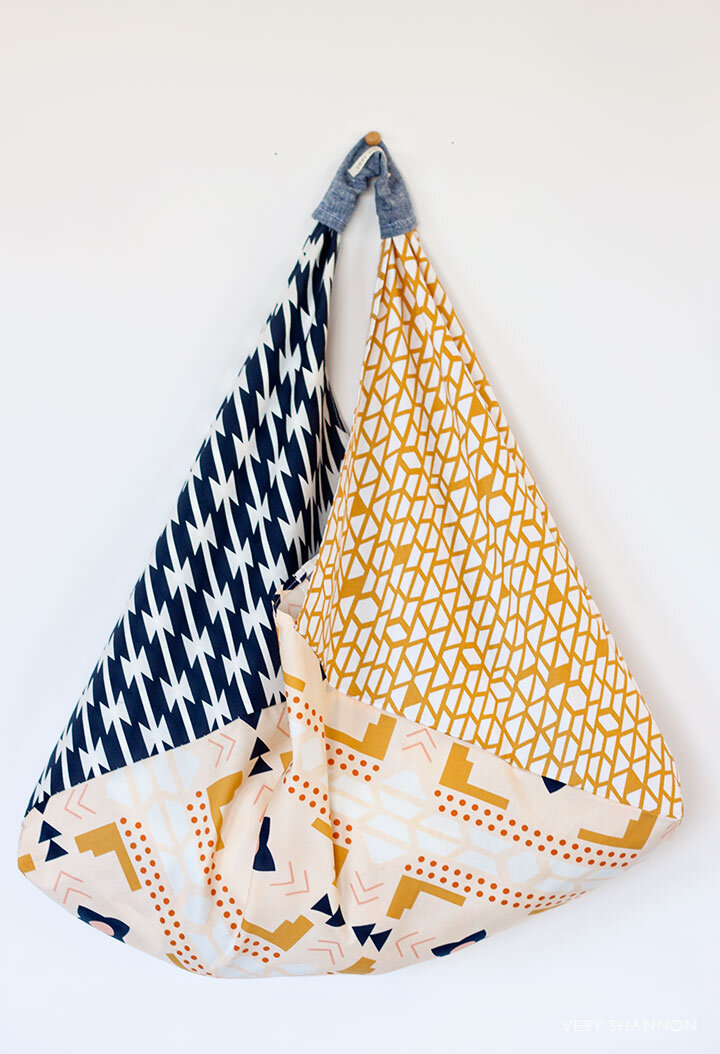Japanese bento bags
Jul 09, 2021
I stumbled across this delightful bag by @themacribosewing recently whilst perusing Instagram. Upon doing a little bit of research I found out that they are called a Bento Bag which are used to hold Bento Boxes (Japanese stacking lunch boxes). These bags are also known as market bag, triangle bag or origami bag. And best of all, they are relatively simple to make! AND they make the perfect canvas to add some sashiko stitching too.
 Image credit: Bento Bag by @themacribosewing
Image credit: Bento Bag by @themacribosewing
They can be small, like this one from Polly Barks of pollybarks.com, who shares that they are super easy to make, for even the most mediocre of seamstress, and she shares her free pattern with us. Best of all, she encourages the use of second hand fabrics to make these delightful bags.
 Image credit: pollybarks.com
Image credit: pollybarks.com
Indigo Bird Design uses this free pattern to store her wools in and she shares with us a way to make an unlined version, which she likes because it is less bulky and easier to tie the knot. Its a super cute (and practical) way to store your current knitting project.
 Image credit: IndigoBirdDesign
Image credit: IndigoBirdDesign
HelloSewing shares with us a free design that is lined, and has a square bottom option AND has a handle. She also provides some rough measurements on what size fabric you will need for different sized bags.
-
Small (kid) 10.5 x 30.5 inches
-
Medium 14.5 x 42.5 inches
-
Large 18.5 x 54.5 inches
-
Extra Large 22.5 x 66.5 inches
Because of its flexibility it is hard to give exact measurements for the finished sizes but Hello Sewing says the large size is roughly 25 inches high and 19 inches wide when it is hanging.
 Image credit: HelloSewing
Image credit: HelloSewing
And here’s an example of using three different fabrics by Very Shannon. This is such a great way to use up fabric scraps.
 Image credit: VeryShannon
Image credit: VeryShannon
I think I've found my perfect weekend project!

